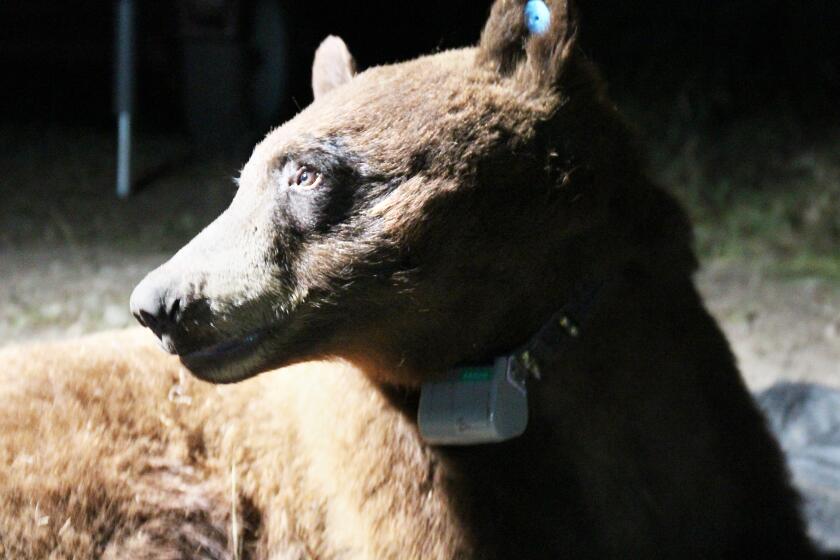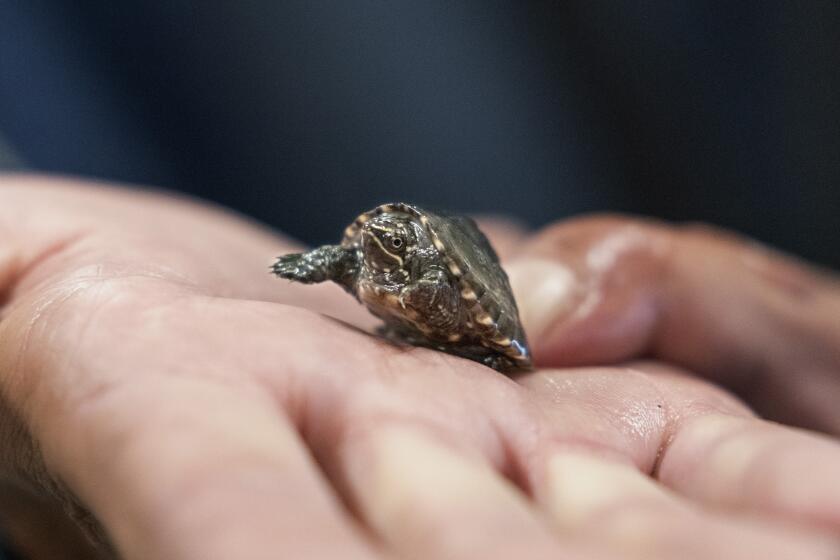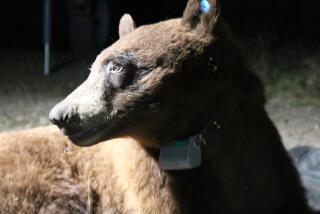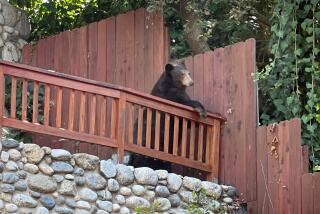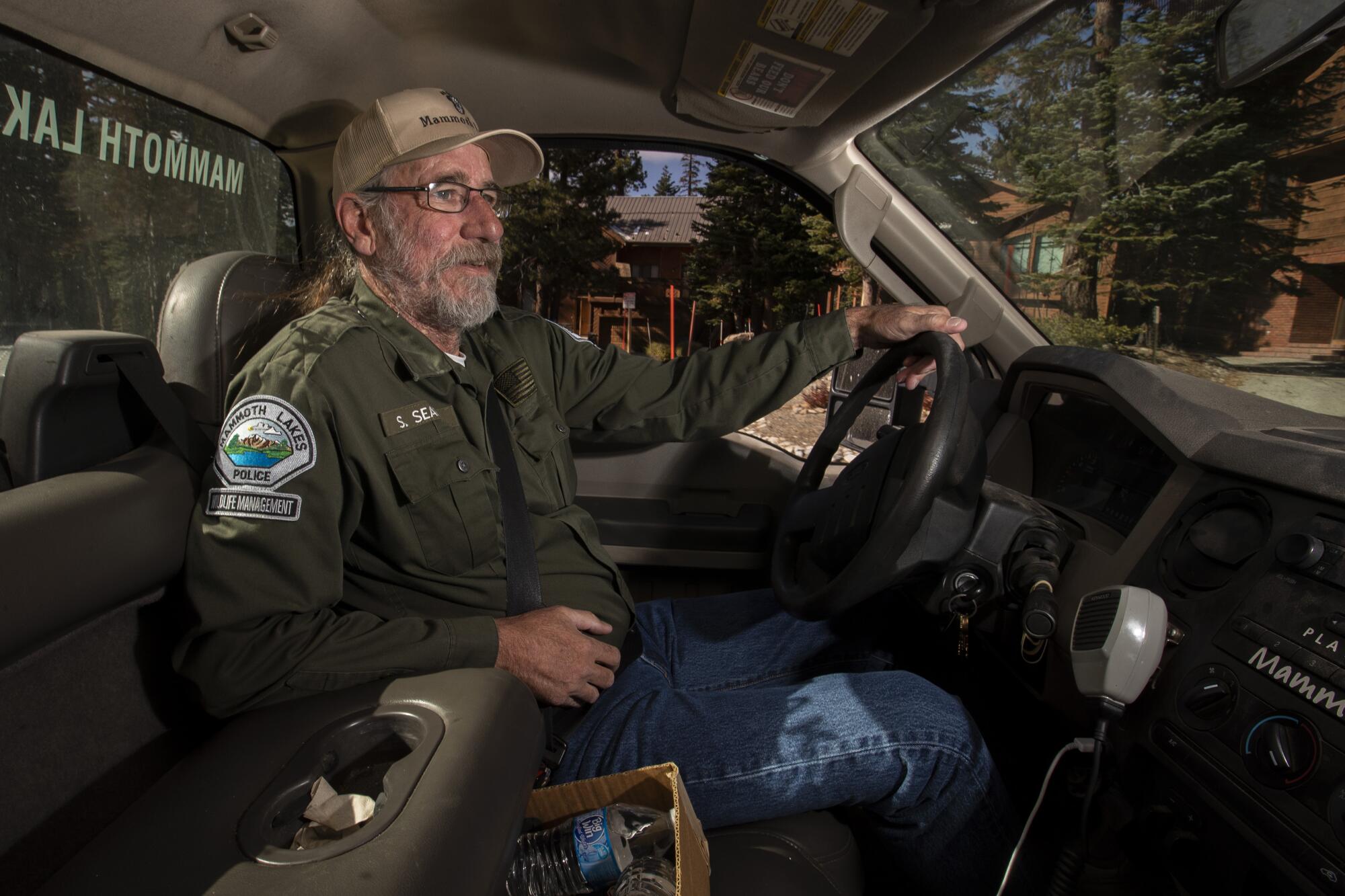
- Share via
On the Shelf
What the Bears Know: How I Found Truth and Magic in America's Most Misunderstood Creatures
By Steve Searles and Chris Erskine
Pegasus: 272 pages, $29
If you buy books linked on our site, The Times may earn a commission from Bookshop.org, whose fees support independent bookstores.
Viral videos are not always a bear’s friend. Recent headlines about a black bear found in Disney World and a video of another cadging lunch in front of a cowering mother and child have raised fears of attacks. If you’re seeking reassurance, look no further than Steve Searles, “The Bear Whisperer” of Mammoth Lakes, Calif. — former star of an Animal Planet show and a bit of a viral sensation himself.
As instructive as Searles’ videos can be, the story of his life has its own dramatic elements. In “What the Bears Know,” with co-author Chris Erskine, he weaves together lessons on understanding nature with the story of how a boy who was “passed around like an old couch” among neglectful and abusive family members grew up to be a savior of bears and people alike.
Searles became Mammoth’s de facto wildlife officer back in the 1990s, but he was not hired to whisper to bears. His first task was to control the raccoons and coyotes that had lost their fear of humans. A longtime hunter, he had been raised in Orange County but born to roam — into the bayous of Louisiana and the mountains of Colorado and many points between. Offered a job by a friend living in Mammoth, he arrived with no real intention of staying.
“Once I drove into town, I didn’t drive back out for six years, not even to Bishop or Las Vegas,” Searles said during a recent joint phone interview with Erskine. “I’ve always been a square peg in a round hole, and I was well aware of that, but when I drove into town I realized I’d found where I’m going to stay until I die.”
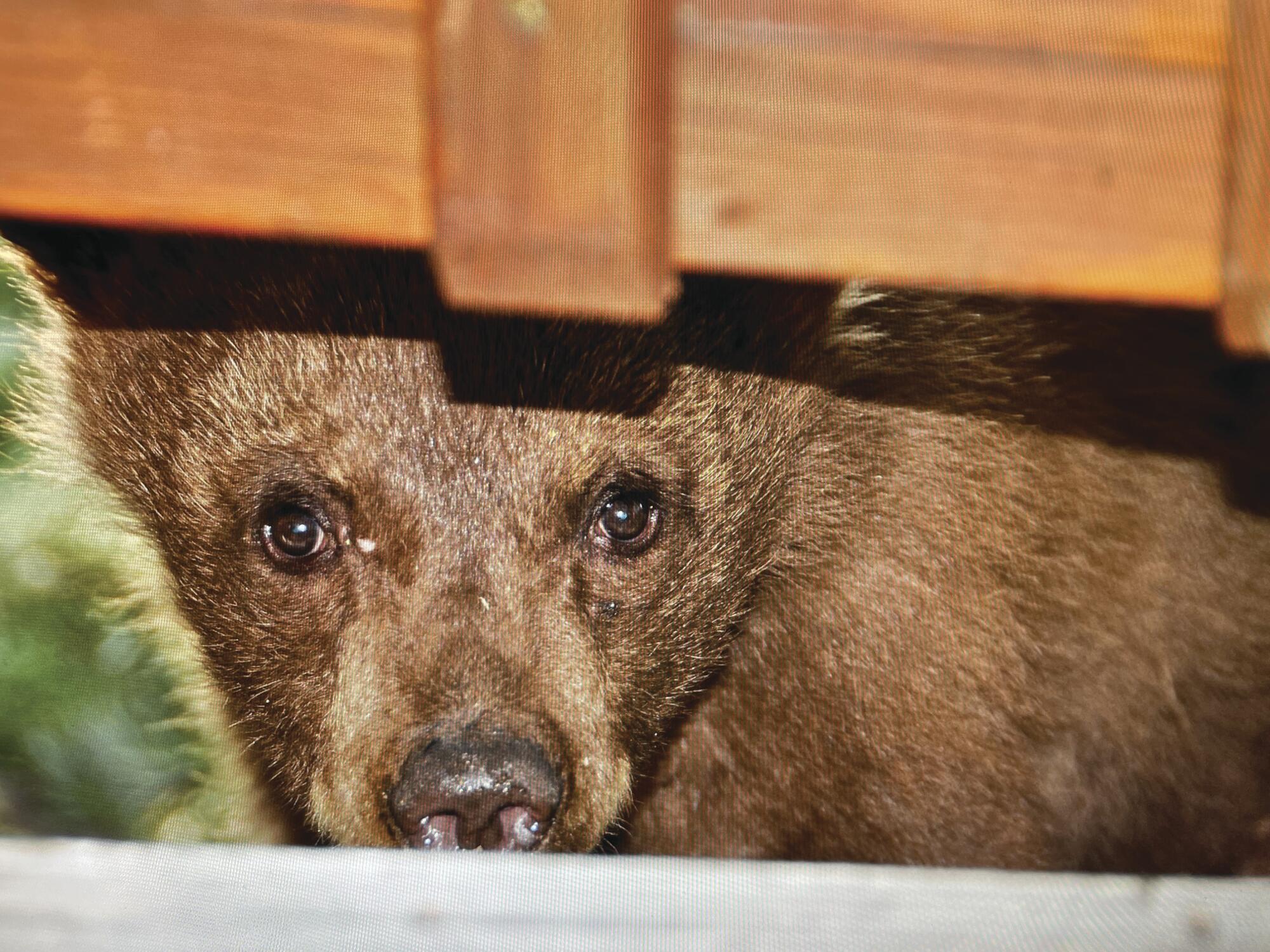
After the town asked him to “get rid of” 16 bears, he instead set out to observe them and found ways to help them coexist with humans. Over two decades, he hasn’t had to kill a single bear except for those with severe injuries (often from car accidents) — and he has transformed Mammoth’s relationship to its ursine residents.
How did he do it? Searles recalls one night at the town dump, when a large male bear known as “Big” wandered in and all the other bears deferred to him. “I saw how much respect they had for each other and their pecking order,” he recalls. “And I just came up with this crazy idea: Could I jump into that pecking order?” He adds, drawing laughter from Erskine, that that’s when he realized bears were “smarter” than their two-legged adversaries; they could more readily adapt to us than we can to them.
This is not recommended behavior in front of, say, a grizzly or polar bear. But black bears are different, more like humans, in that they’ll follow the path of least resistance to get to their food. Instead of stripping a vine for berries, they’ll grab the greasy bag of garbage left in someone’s backyard.
This article was originally on a blog post platform and may be missing photos, graphics or links.
Searles set out to reteach the bears some boundaries using a combination of non-lethal methods — sometimes a gentle word, sometimes a sting to the hindquarters with rubber buckshot — that have netted ursine attention and respect. And he’s been teaching humans about boundaries too, warning against hand-feeding, leaving out open containers or keeping crawl spaces exposed.

Searles and Erskine appear on the surface to be an odd couple. Erskine was a longtime columnist with the Los Angeles Times, and the pair hit it off when Erskine profiled him. After Searles was approached by a publisher to write a full-length book, he asked Erskine to help.
“It was a real meet-cute,” Erskine says. “Here we are in his freakin’ old truck with him smoking up a storm, and in addition to developing lung cancer, I was also afraid that his shotgun is going to take my head off if we hit a bump.” Both men, it turned out, were processing heavy burdens of grief. Searles’ 30-year marriage was dissolving, while Erskine was grieving the loss of his son and his wife in the same year.
“This was the perfect book for us at the time, and we poured a lot of our emotions and our desperation into the subject,” Erskine says. Writing about saving bears became a lifeline.
“A big part of our journey and us writing together is not in the book,” Searles adds. “We talked about what it’s like to be a man, to be a father, to be a citizen, to be worthy.”
Biologists think the bear, now known as BB-12, is 3 or 4 years old and could be the cub that made headlines in July 2021 wandering through a Thousand Oaks neighborhood.
As the pair worked together it became clear that many of the things Searles had learned about bears could apply to humans. Corralling bears is not unlike parenting: Consistency and structure make the job easier. Other truths emerged as Searles created a system for interacting with bears: “When things get troubling or scary, our instinct is to go into the house, lock the door, when what we really need to do is the opposite. We need to engage, we need to be kind.”

Erskine hopes to help people realize how fear works. “The things I’m proudest of in this book is what it says about how we demonize the things we don’t understand,” he says. “The bears were misunderstood in Mammoth, and they’re misunderstood in Los Angeles. I have this theory that all problems are education problems.”
One thing you shouldn’t fear is that “What the Bears Know” is a dry animal-encounter primer. The writers draw you in with funny anecdotes, and Searles discusses his difficult past. When he was in fifth grade, his parents exiled him to a camper shell where he kept himself warm with the stove. As he writes: “The weakest link, the slowest and youngest of the three kids, a misfit, a loser, an obligation they don’t want, I am beaten with a belt, slapped around, throwin into walls.”
In a climate crisis that feels huge and hopeless, these eight books — essays, fiction, memoir and poetry on the wild — will help you focus on small things
After half a life of wandering, Searles made deep connections in Mammoth Lakes. During our interview, he chokes up remembering Shorty Stone, one of his closest friends, who as a member of the Paiute tribe introduced Searles to the healing and clarity he found in the sweat lodge.
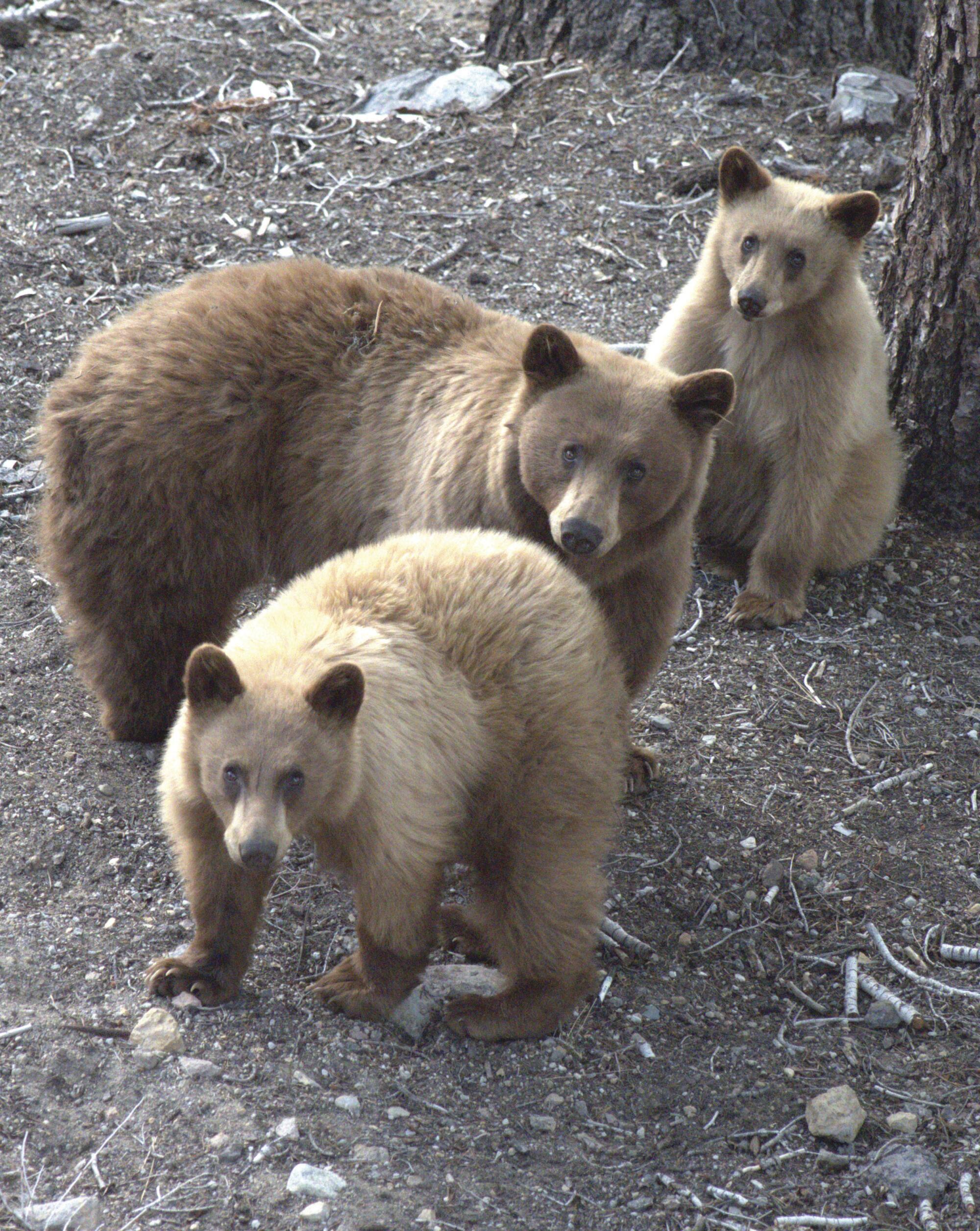
Shorty taught him that paying attention to interactions with nature improves one’s relationship to oneself. Sitting with an injured bear he must euthanize or even in cutting down a tree, one must pause, “acknowledge the gratitude” to the natural world for giving us more than we give back. “A little bit of gratitude goes a long way,” Searles says. “You might let the guy in who is getting on the freeway, or let somebody go in front of you in the grocery line. Don’t set the bar too high, just start out easy and do the right thing ... Just be nice, goddammit.”
Coexistence is more than a bumper sticker, in other words. It’s our only way out of a climate crisis brought on by the attitude that brutal competition is the natural order. Erskine draws hope from the bit of evidence to the contrary provided by the black bear.
“The fact that bears are thriving surprises people in a time when all we hear is about the climate collapsing,” he says. “And it is. Bear country used to be Yellowstone and Yosemite, but now it’s the suburbs of New Jersey and Los Angeles. Why is that? what can we glean from it? How is that a good thing? It’s a ray of hope.”
Berry writes for a number of publications and tweets @BerryFLW.
More to Read
Sign up for our Book Club newsletter
Get the latest news, events and more from the Los Angeles Times Book Club, and help us get L.A. reading and talking.
You may occasionally receive promotional content from the Los Angeles Times.
